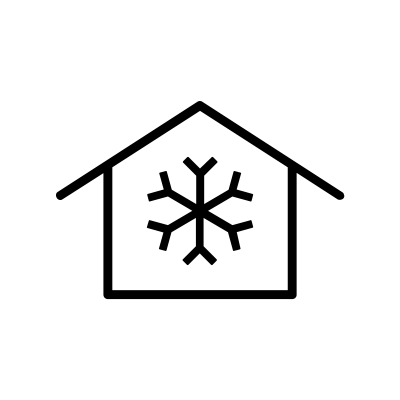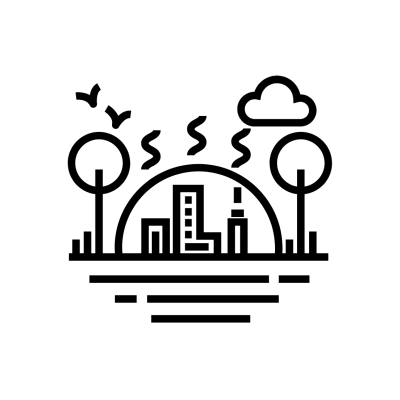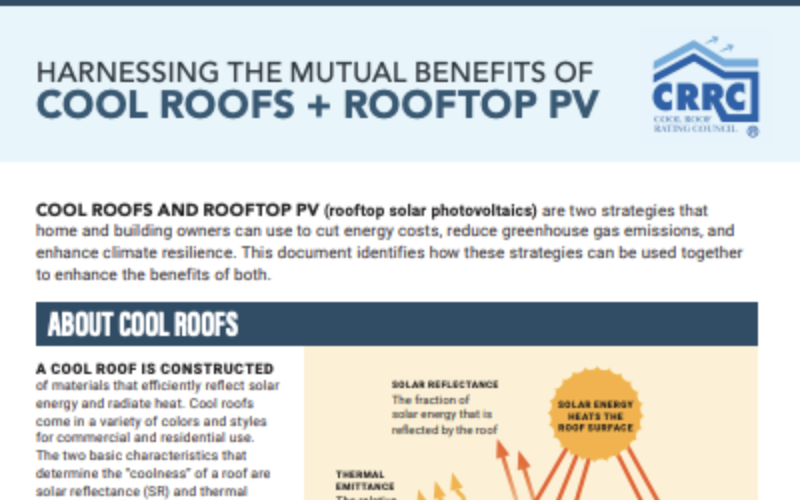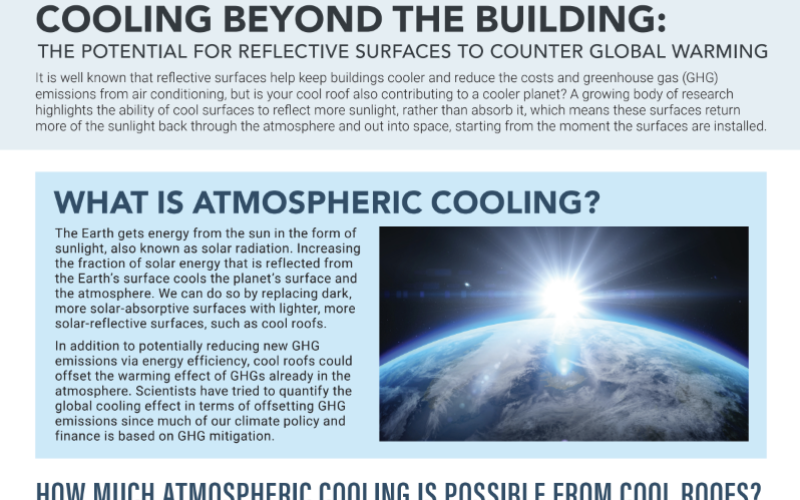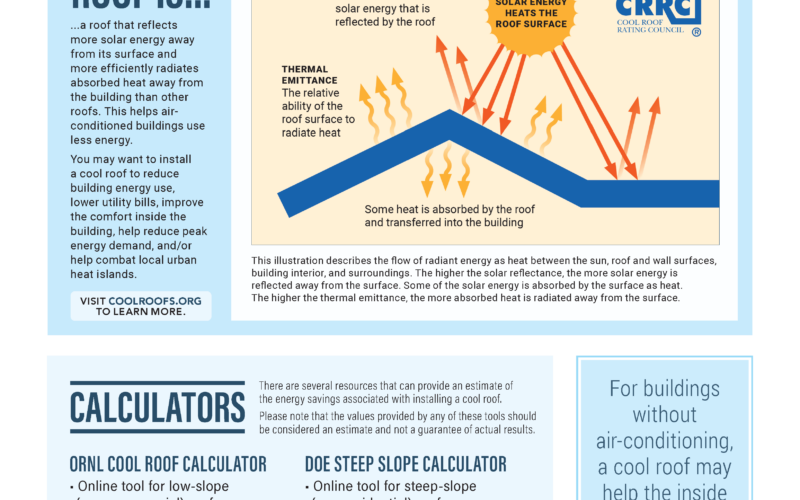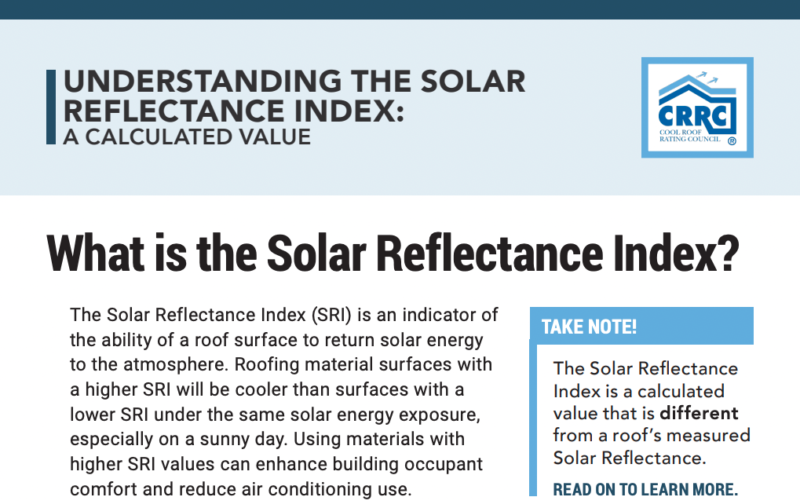What is a Cool Roof?
A cool roof is one that strongly reflects sunlight (solar energy) and also cools itself by efficiently emitting any heat that was absorbed. The roof literally stays cooler and reduces the amount of heat conducted into the building below. If a building does not have air conditioning, this keeps the building cooler and a more constant temperature. If a building has air conditioning, the equipment does not have to work as hard. Imagine wearing a white or a black T-shirt on a hot day. By wearing the white T-shirt you will remain cooler than if you wore a black T-shirt because it reflects more sunlight and absorbs less heat. Cool roofs, like a white T-shirt, keep the internal temperature of the building lower.
However, a cool roof does not need to be white. There are many "cool color" products which use darker-colored pigments that are highly reflective in the near infrared (non-visible) portion of the solar spectrum.
The two basic characteristics that determine the "coolness" of a roof are solar reflectance and thermal emittance. Both properties are measured on a scale from 0 to 1, where 1 is 100% reflective or emissive.
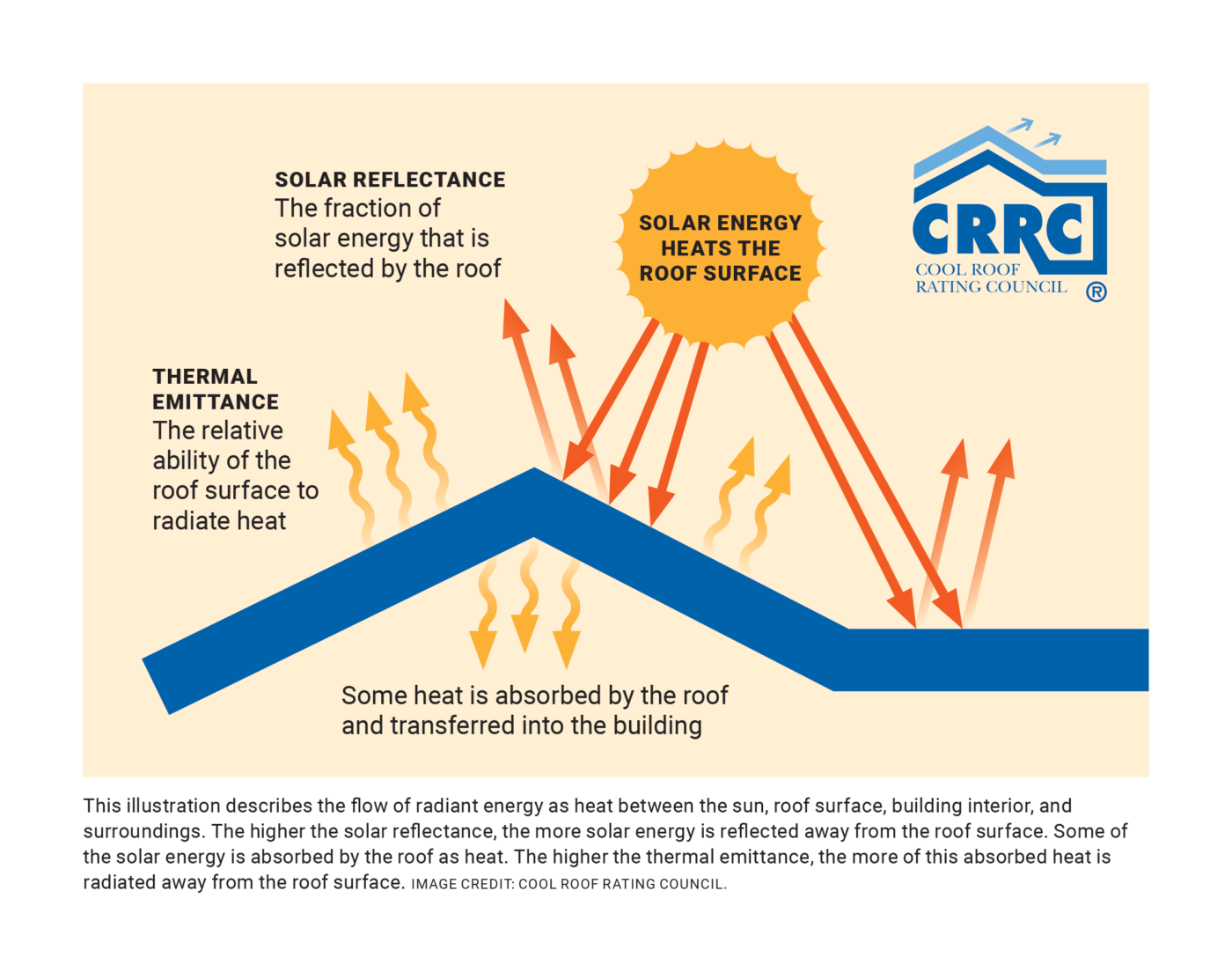
The CRRC measures these two properties for roofing products, both for the product's initial values and after three years of outdoor exposure. The CRRC publishes the results on the Rated Roof Products Directory. The Directory enables you to compare the rated values of various product types and brands.
Cool Surfaces Video
The below video provides core instruction on the topic of surface radiative properties and is one of three segments included in the Cool Surfaces Video. The other topics in the full video include the urban heat island effect, and cool roofs and cool exterior walls. All three segments can also be viewed as one video here or individually on the Cool Surfaces Lesson Plan page.
To view the video on YouTube or watch in full screen, click the YouTube logo at the bottom right of the video.
Surface Radiative Properties (Cool Surfaces Video Part 2)
Visit Resources for Home and Building Owners to learn more about the benefits of cool roofs.
Cool Roof Research
A Global Economic Assessment of City Policies to Reduce Climate Change Impacts
Bright Is The New Black—Multi-year Performance of High-albedo Roofs in an Urban Climate
Demonstrated Energy Savings of Cool Roof Coatings and Future Directions for Research
Effect of High Aged Albedo Cool Roofs on Commercial Buildings Energy Savings in U.S.A. Climates
Energy Performance Impacts from Competing Low-slope Roofing Choices and Photovoltaic Technologies
Measured Energy Savings of Light-colored Roofs: Results from Three California Demonstration Sites
On the Use of "Cool Roofs" to Reduce Residential Heat Exposure Disparities in Boston, MA
Special Infrared Reflective Pigments Make a Dark Roof Reflect Almost Like a White Roof
The Joint Influence of Albedo and Insulation on Roof Performance: An Observational Study
The Joint Influence of Albedo and Insulation on Roof Performance: A Modeling Study
Three-Year Weathering Tests on Asphalt Shingles: Solar Reflectance
